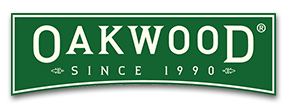
Indulge in all things home-made
There is nothing more treasured that homemade gifts. Get your children together to make their own Christmas decorations, drawings and gift boxes. In our household, the home-made Christmas cards are a family tradition. We also indulge in home-made chocolates, biscuits and gift-boxes.
Wrap with love
Rubbish volumes increase by up to 30% during the festive season. But it’s easy to reduce waste volume by re-using old wrapping paper or opting for recycled newspaper, magazines, or even some drawings from your children.
Also consider the traditional Japanese method of fabric-wrapping. This is where you wrap gifts in fabric and tie it with string and then pass it on to the next person to re-use.
Give mindfully
Christmas is a time of abundance, so try to think carefully about the gifts that you buy, with an emphasis toward locally-sourced, quality goods. Most people tend to overspend during the final days of retail sales. But if you plan in advance, you can purchase gifts from local Australian companies, which will also benefit our local economy.
Make sustainable food choices
It’s easy to get carried away with the traditional turkey and ham at Christmas lunch. Just be aware that unless you are buying your food from local, free-range farms, it can carry a hefty carbon footprint. A cheaper, and more sustainable option would be to look for local produce that is in abundance during this time of year. A roast chook or pork belly is often cheaper and more sustainable than the traditional cuts, as they are less popular during the festive season. Also make sure that you make use of the leftovers and prepare your meal so that nothing is wasted.
Decorate with nature
Christmas tables are often decorated with an abundance of tinsel and colour. But this year, in a view to creating a sustainable table, consider sourcing your decorations with local found objects; some pinecones from a local park, leaves that your kids have collected from your back garden or an assortment of wild flowers that you can pick from your neighbourhood. This will not only add a touch of colour to your table, but it will reflect the beauty and identity of your local area.
Arabella Forge – Brand Ambassador & Household Expert


